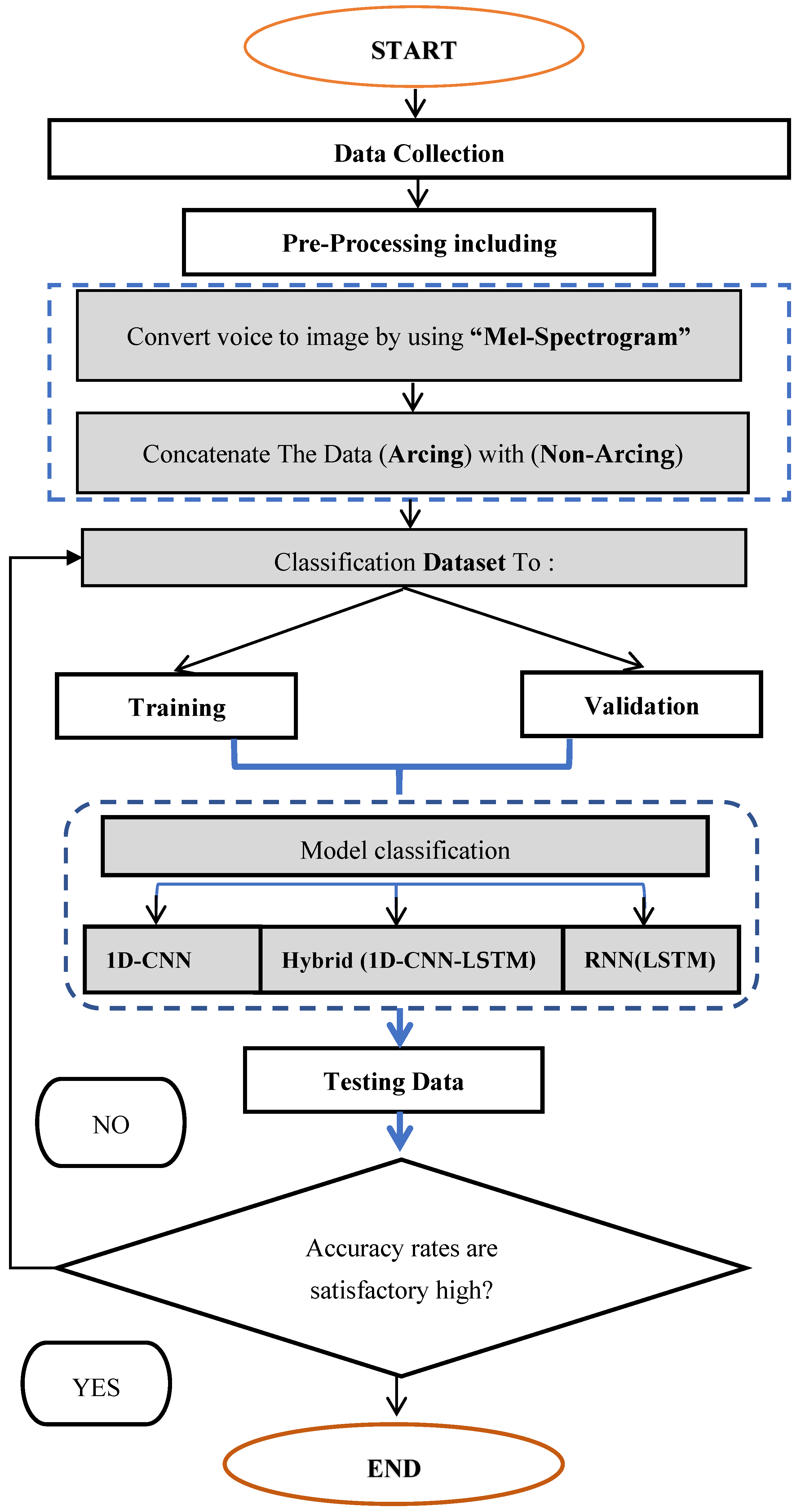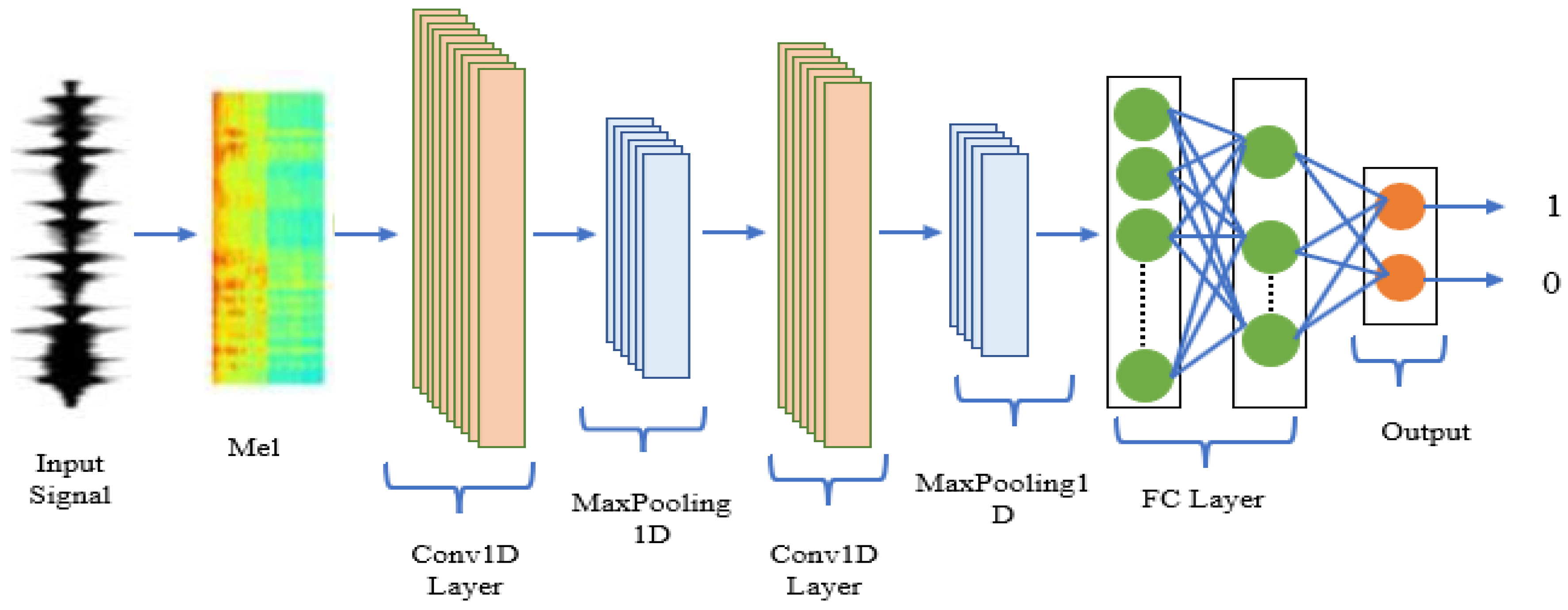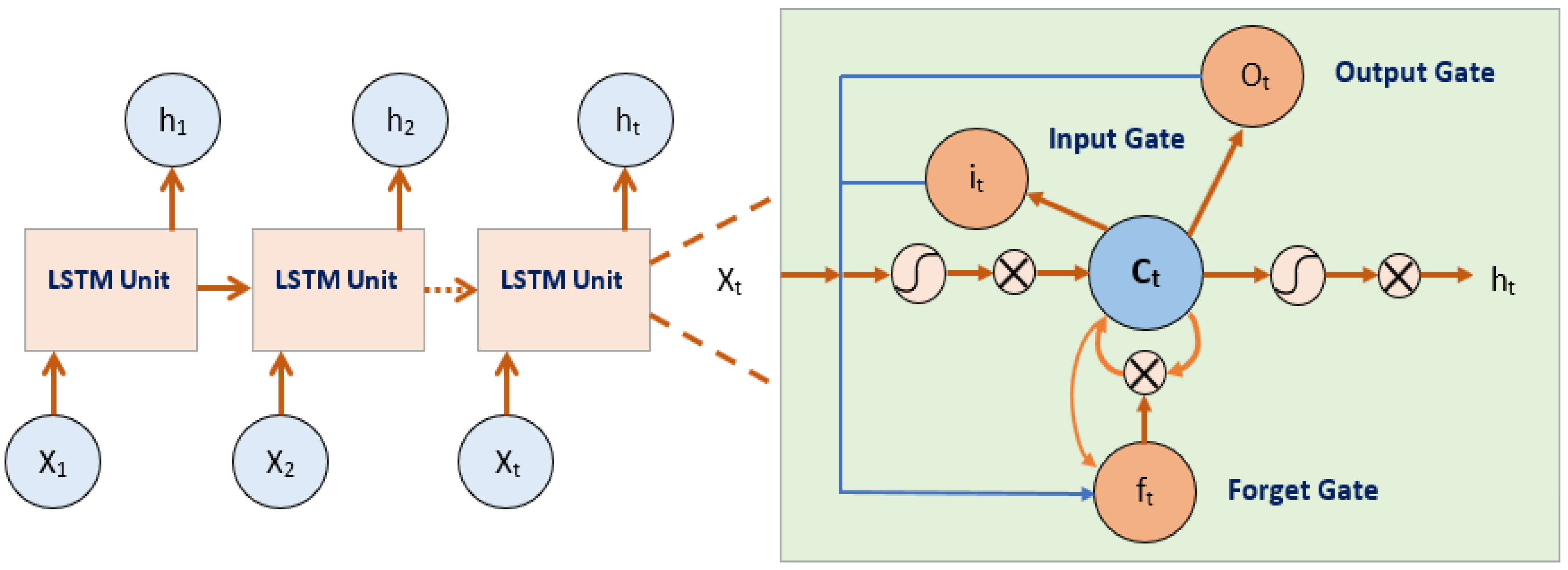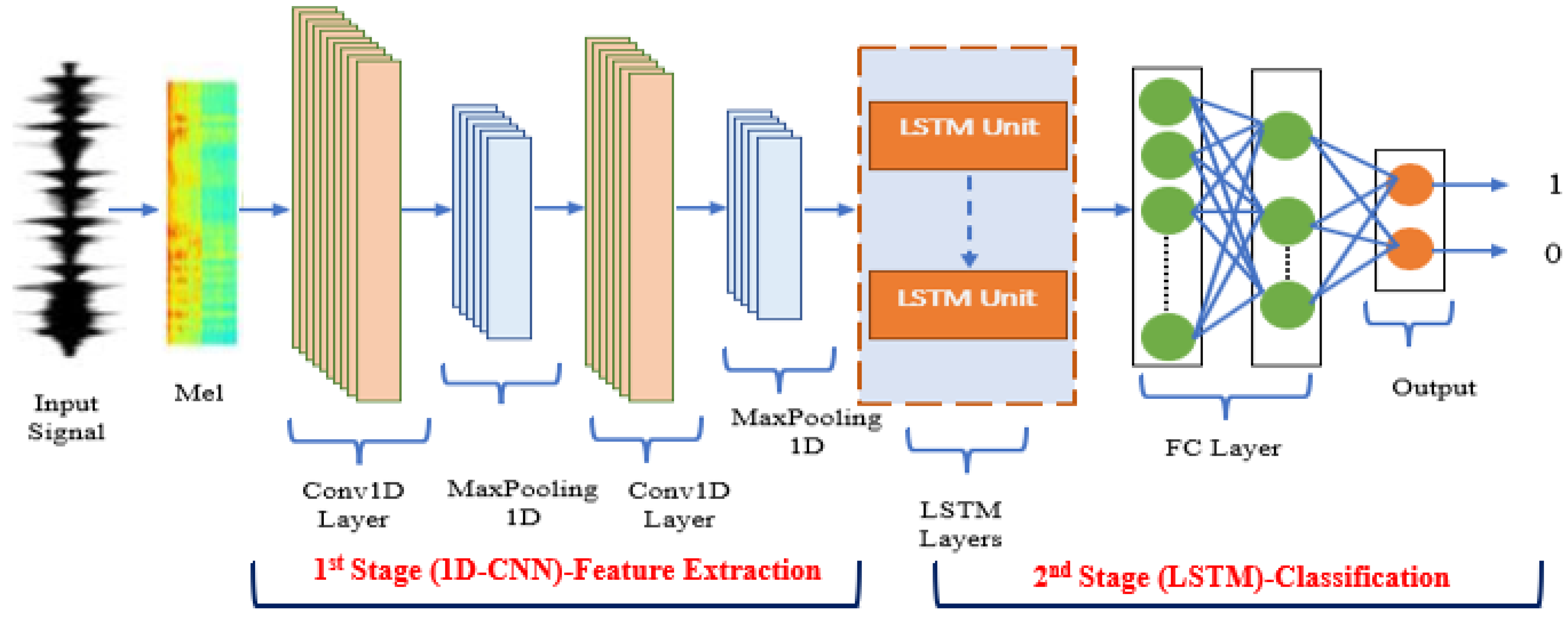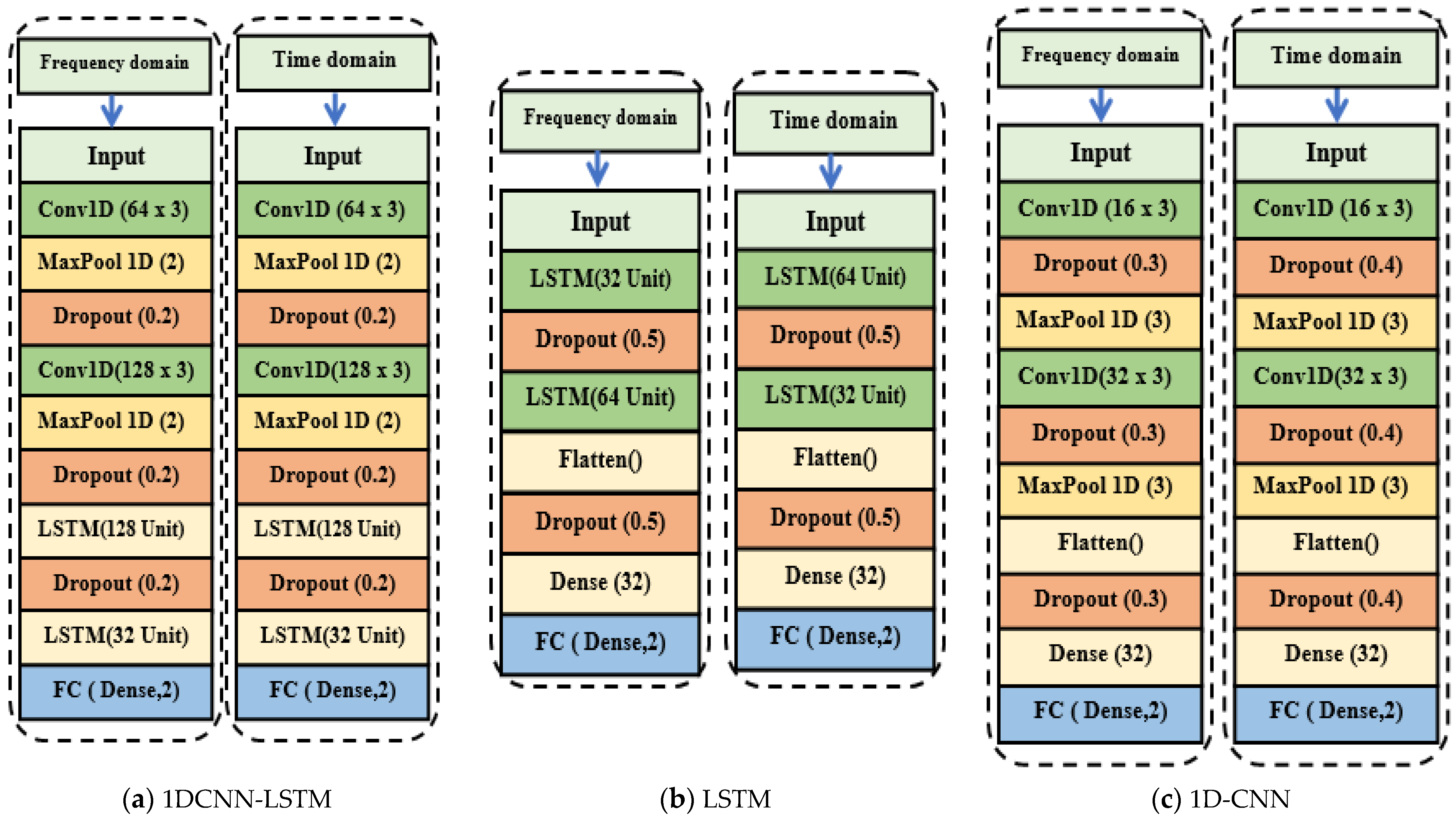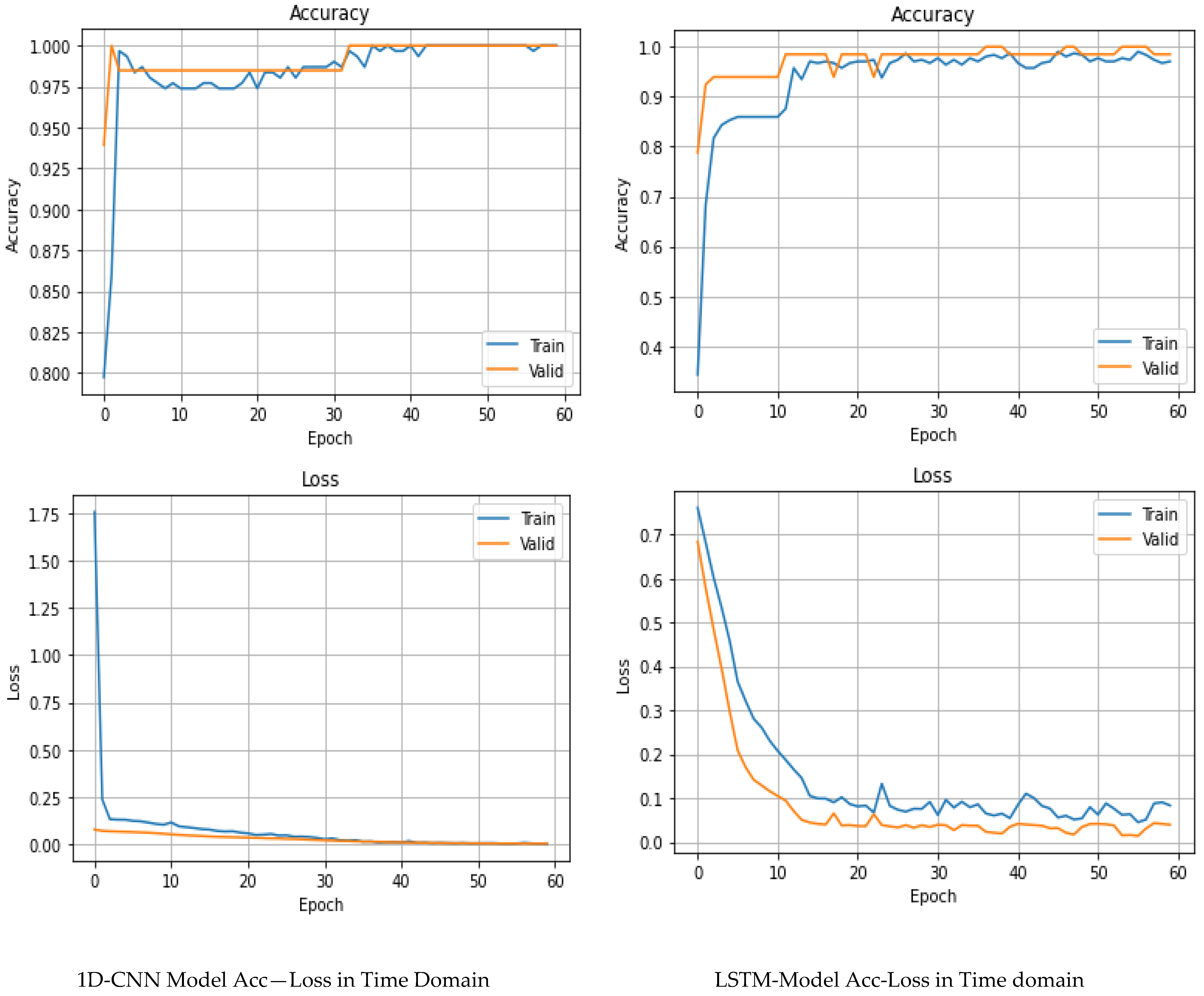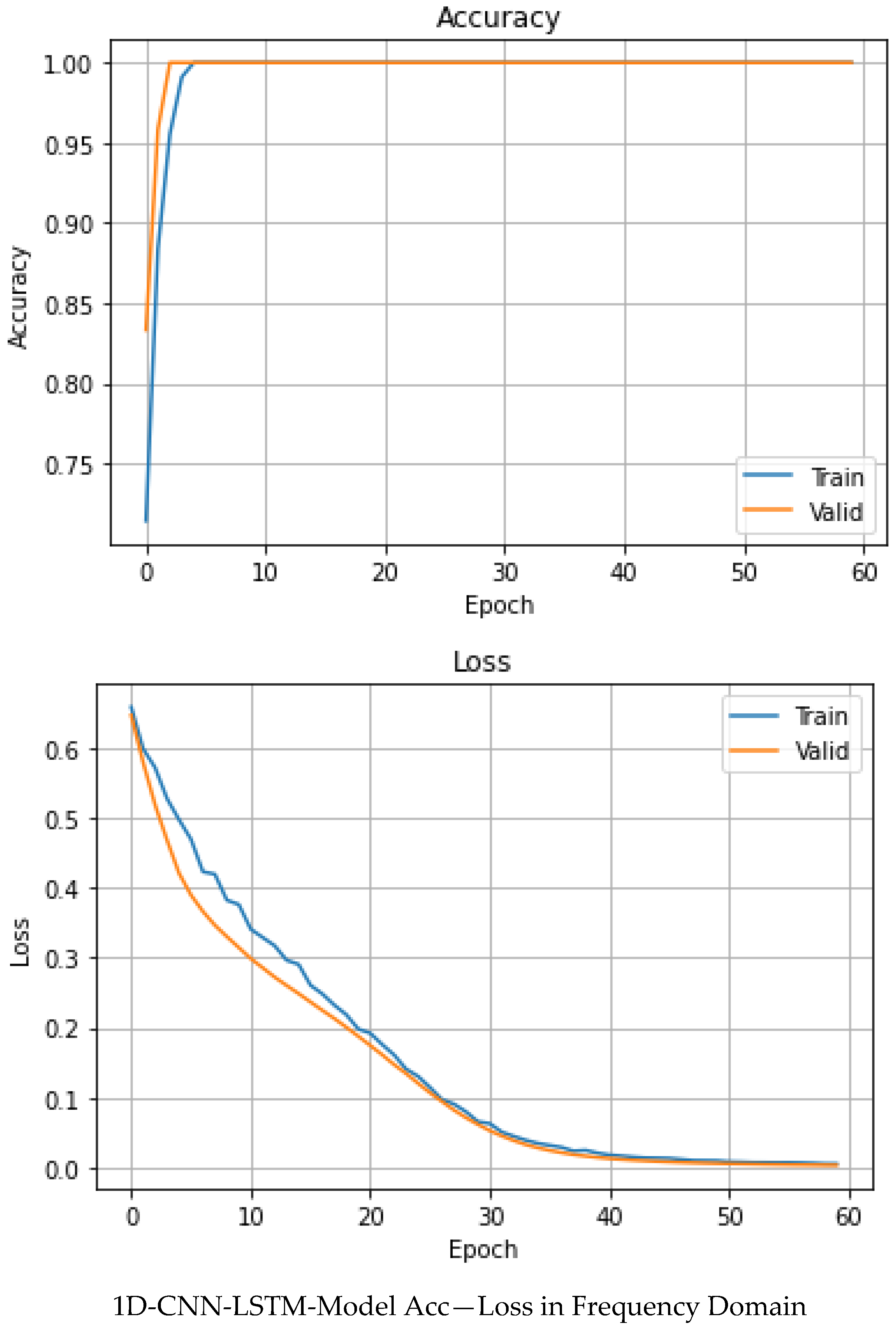Switchgear is an indispensable component of power plants as it plays a crucial role in breaking and shutting down electrical current as well as transferring and replacing power loads. Additionally, it allows for the isolation of faulty equipment or lines, thereby ensuring the secure operation of the power system [
1]. In order to minimize power losses caused by current flow, power distribution is performed at service voltage levels that are lower than the rated voltage [
2]. The switchgear cabinets used in power plants typically incorporate various parts such as circuit breakers, knife gates, bus bars, and insulators, among others. This results in a complex internal structure with multiple gaps between devices, which poses a significant problem in terms of providing reliable insulation to prevent breakdowns [
3,
4]. Switchgear can be classified into three types: gas-insulated, oil-insulated, and air-insulated, which are further categorized based on their voltage level into low, medium, and high voltage groups [
5,
6]. To ensure continuous and uninterrupted power supply to the end user, regular and thorough monitoring of operational performance and general working condition of switchgear is necessary [
7]. In case of any malfunction, quick and efficient troubleshooting along with appropriate countermeasures are required [
8]. Switchgear faults and failures can be categorized into several types, one of which is arcing, which is a common issue in switchgear [
9,
10]. An arcing fault occurs when a high-voltage plasma discharge creates an electric arc between stage-to-stage or stage-to-neutral conductors, resulting in an arc flash. Several factors that can lead to an arc flash are mechanical failure, overload, or human error such as inadvertently touching the wiring or an electrified busbar [
11]. An arcing fault is a high-current, low-impedance fault that occurs when an electrical discharge jumps across a gap in the insulation between conductors. This discharge produces high temperatures that can damage the insulation and the conductors themselves, leading to further electrical problems [
12]. Partial discharge is another type of fault that occurs when small electrical discharges or arcs happen between conductors in the insulation material, resulting in localized heating and degradation of the insulation. This fault can eventually lead to the failure of the insulation and cause a short circuit or arcing fault [
13]. Arcing faults are dangerous to both people and equipment and can cause big financial losses and halt important operations. Because of this, arc fault mitigation measures have been made to deal with these dangers and increase awareness among workers [
14]. To quickly and effectively suppress arcs, various protection strategies and the effects of arc short-circuit are discussed in these studies [
15,
16]. The energy loss caused by an arc discharge is affected by the arc voltage, current, and duration. Thus, there are several approaches to minimize arc duration or short-circuit duration and limit the energy of the arc [
17,
18]. One common technique is moving the arc from its original location by grounding, while another method is to activate the primary switch and accelerate protection using sensors other than traditional current transformers. These methods can decrease the duration of the arc and reduce its incident energy, as well as the magnitude of the arc current in some cases [
19]. There are two main types of arcing faults [
20]. The first type is a “series arc fault” which happens when a single wire is damaged to the point that it cannot carry current. Arcing then occurs in the gaps between the conductors and spreads to the insulator. The second type is a “parallel arc fault” which occurs when current passes through defective insulation and shorts out as it travels between conductors. This type of fault can be difficult to detect by circuit breakers since it is a weak circuit fault that creates arcs as the leakage current passes through the insulating components [
21]. Typically, the conventional sensor module in the switchgear provides the most recent data on the current. Arc faults can be addressed by using either a differentiated protection system or regular overcurrent protection [
22]. The time required for contemporary relays and circuit breakers to detect and interrupt an arc fault is normally at least 50 milliseconds (ms), which includes the trip relay contact closing and the switch opening. Depending on the relay types and circuit breaker technology, the automatic trip time can reach 50 ms or longer. This delay can be due to the need to blow off lids or doors (in gas-insulated switchgear) with sufficient force to ensure that the arc fault is extinguished before the pressure peak [
23,
24]. Additionally, it can be caused by the operator in the switch room releasing hot gas, or by shortening the time for the circuit breaker (via loop sensor) to trip when an abnormal light is detected in the switchgear assembly, thereby accelerating the protective logic’s response time. There are several ways to recognize and monitor these faults in switchgear and control gear. Diagnostic testing, visual inspection, and condition monitoring are some of the most effective methods [
25,
26,
27]. Diagnostic testing is an important technique that is used to evaluate the condition of switchgear and control gear. It involves subjecting the equipment to various tests including insulation resistance testing, dielectric testing, and partial discharge testing. These tests can identify any weak points in the insulation or other components of the equipment that may be susceptible to arcing or partial discharge [
28]. Visual inspection is another important technique that can help to recognize arcing faults and partial discharge in switchgear and control gear. Inspectors should look for signs of damage, wear, or overheating, such as discoloration or burn marks on the equipment, as well as debris or other contaminants that may have accumulated inside the equipment [
27]. Condition monitoring is a more advanced technique that involves monitoring the equipment’s performance in real-time using sensors and other monitoring devices. This technique is especially useful for detecting early signs of arcing and partial discharge that may be missed by other inspection methods. For example, a monitoring system can detect increases in temperature, changes in electrical signals, or other anomalies that may indicate a developing fault [
5]. In recent years, deep learning has made significant progress and has been extensively applied in various fields, particularly in images [
29] and natural language processing [
30], as well as in the medical [
31], industrial [
32], and energy sectors [
33,
34]. One of the most well-known deep learning models, the Convolutional Neural Network (CNN), can extract features by using different filters in the convolutional layers which includes pooling layers, normalization layers, and fully connected layers, and can improve the performance of various tasks during execution [
35]. The CNN is a powerful algorithm that can automatically extract relevant features from input data, including time series data. However, unlike other algorithms such as the Long Short-Term Memory (LSTM), CNN cannot remember past time series patterns, which can limit its ability to identify the most significant and representative aspects of the data. This makes it challenging for CNN to directly comprehend the underlying temporal dependencies within the time series data [
36]. In the context of switchgear fault detection and classification, Recurrent Neural Networks (RNNs) are employed in this application, which is a type of neural network capable of recalling previous data by using the network’s outputs to input new data [
37]. In recent years, RNNs have gained a lot of attention for their use in natural language processing [
38] and speech recognition [
39]. Among the various RNN architectures, the LSTM has gained widespread popularity in the field of time series analysis [
40]. Its architecture is particularly adept at handling the gradient-vanishing issue that arises in basic RNNs. Additionally, it aids in learning long-term relationships, which may improve the network’s understanding of the temporal aspects of sequential data. To enhance the modeling capabilities of deep neural networks and produce a time-accurate representation of the sequence [
41], a convolutional LSTM neural network was developed by combining the strengths of CNN and RNN, and applied to various tasks including energy forecasting for time series data with different durations [
42,
43], speech emotion recognition [
44], and challenging vocabulary tasks [
45]. The specifications provided by the manufacturer on the dashboard are often used as a basis for identifying the location where an arc could occur and tracking its position. The evaluator collects the optical sensor signal and analyzes the trigger signal when the input from the sensor surpasses a certain threshold [
46]. Over the last few decades, soft computing and artificial intelligence algorithms have been successfully used to solve real-world engineering issues in many areas [
47,
48]. Therefore, this study aims to employ soft computing and ultrasonic inspection systems to detect arcing faults immediately as they occur. By doing so, it will be possible for the government and appropriate companies to take the necessary steps and precautions to prevent future incidents and avoid larger losses.
